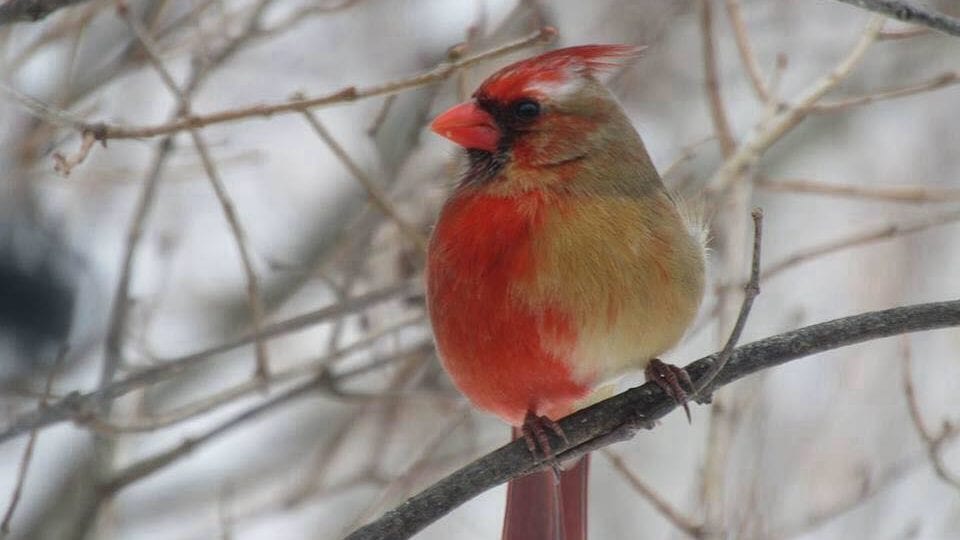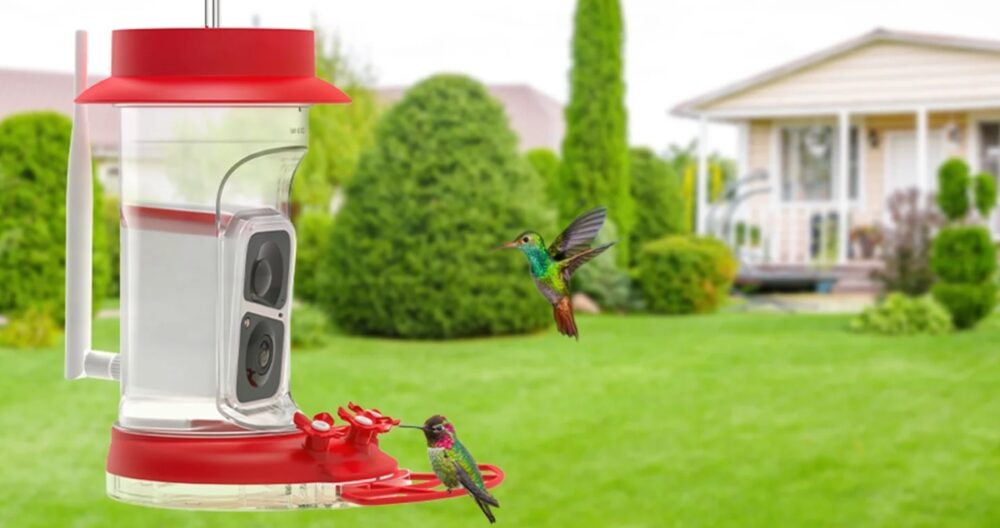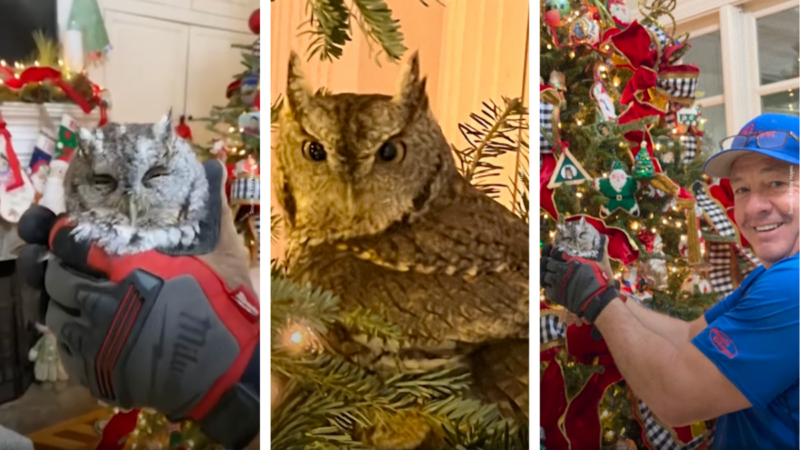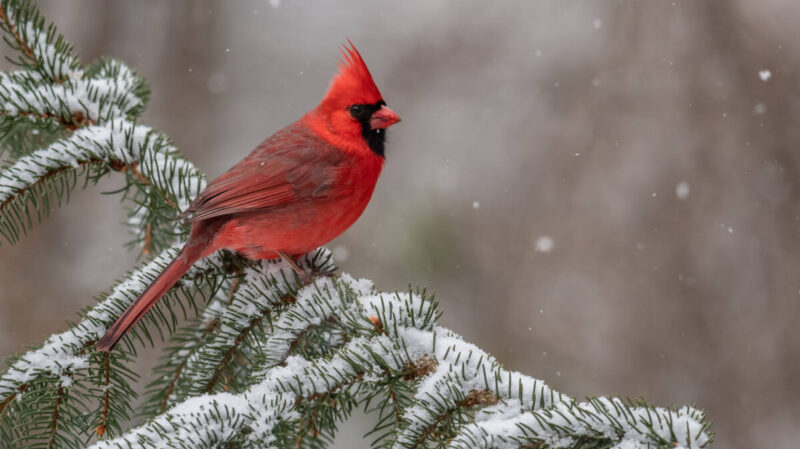Casual birdwatchers captured a photo of a rare half-male, half-female cardinal in their backyard

Shirley and Jeffrey Caldwell were casually watching the birds in their backyard through the kitchen window when they saw something quite unusual. Although the Erie, Pennsylvania, couple does not consider themselves studied birdwatchers, they were certain that what they were witnessing was rare.
They spied a two-toned cardinal that was half-red and half-tan. The bird actually looked like two halves of one fused together — the left side looked like a female cardinal, while the bird’s right side was the distinctive bright-red of a male. They snapped some photos of the curious bird, knowing it was a sight they would likely not encounter again. Here’s one of those photos, which Shirley posted to Facebook:
It turns out that the cardinal was what is known as a gynandromorph, which is an animal that is half male and half female. Although they can be found among a variety of species, their appearance does not always make them obvious. In the case of the cardinal, because male cardinals are red, and female cardinals are tan, the gynandromorph really stands out for its striking two-colored body.
“You get gynandromorphs in species where cell division is pretty simple,” Carol A. Butler, who has authored a number of books about animals, explained to NBC News.
Butler says that gynandromorphs are exceedingly rare, which was not lost on the Caldwells.
“It was really a once in a lifetime thing,” Shirley told the outlet of the experience. “My first time seeing one and probably my last time.”
Brian D. Peer, an ornithology specialist at Western Illinois University who has studied a bilateral gynandromorphic cardinal before, says during his study, he never saw the bird sing or mate, but he says that does not mean it was not capable. Scientists believe they’re infertile, though.
Male songbirds have more neural connections in the brains that enable them to sing complex songs, leading Daniel Hooper, an evolutionary biologist at the Cornell University Lab of Ornithology, to wonder how that would affect gynandromorphs’ singing ability.
“I would imagine, there simply just isn’t a complete neural network for producing a song or the right hormonal cocktail in the brain circulating to motivate the bird to sing one even if it could,” he told The New York Times in an email.





